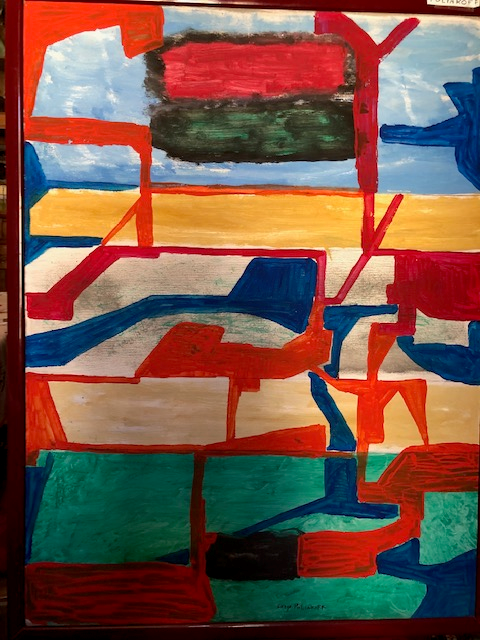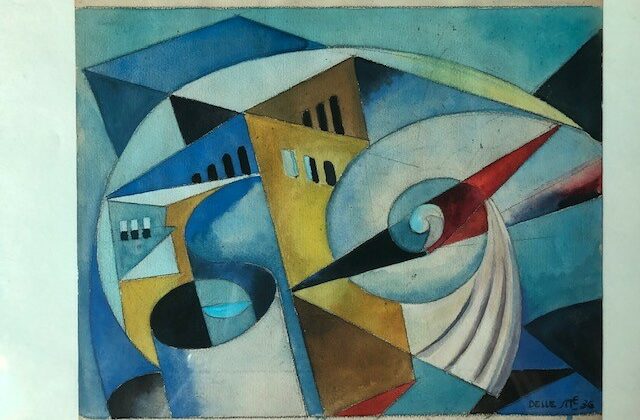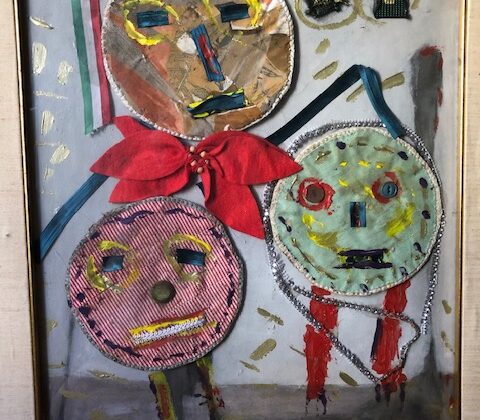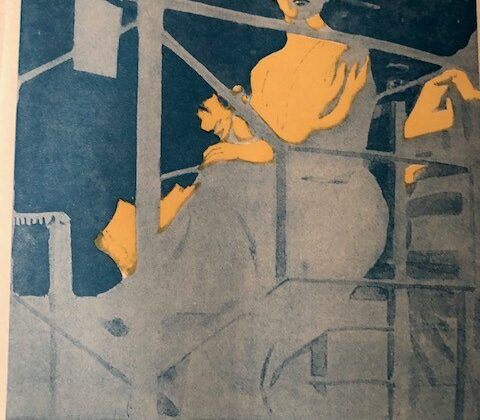Serge Poliakoff, big painter and guitarist
By Prof. Francesco Carelli
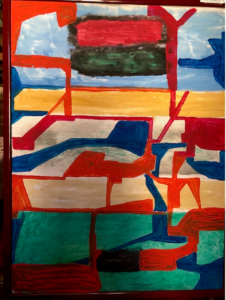
Serge Poliakoff (Moskow , January 8, 1900 – October 12, 1969) was a Russian-born French modernist painter belonging to the ‘New’ Ecole de Paris (Tachisme).
He enrolled at the Moscow School of Painting, Sculpture and Architecture, but fled Russia in 1918. He arrived in Constantinople in 1920, living off the profits from his talent as a guitarist.
He went on to pass through Sofia, Belgrade, Vienna, and Berlin before settling in Paris in 1923, all the while continuing to play in Russian cabarets. A product of the Russian diaspora that followed the Bolshevik Revolution, Poliakoff fled to the West, educating himself in the art schools and museums of London and Paris. He painted every day while raising a family, supporting this life by playing Russian folk songs on guitar in Parisian nightclubs late into the night. This hectic existence lasted well into his forties, when twenty years of foundational pictorial research finally came to fruition in a distinctive synthesis of painterly sensuality and ideational planarity.
In 1929 he enrolled at the Académie de la Grande Chaumière. His paintings remained purely academic until he discovered, during his stay in London from 1935 to 1937, the abstract art and luminous colours of the Egyptian sarcophagi. It was a little afterwards that he met Wassily Kandinsky, Sonia and Robert Delaunay, and Otto Freundlich.
With these influences, Poliakoff quickly came to be considered as one of the most powerful painters of his generation. In 1947, he was trained by Jean Deyrolle in Gordes in the Vaucluse region of France amongst peers such as Gérard Schneider, Émile Gilioli, Vasarely. By the beginning of the 1950s, he was still staying at the Old Dovecote hotel near Saint-Germain-des-Prés, which was also home to Louis Nallard and Maria Manton, and continuing to earn a reliable income by playing the balalaika. A contract enabled him to quickly gain better financial stability.
In 1962 a room was given over to his paintings by the Venice Biennial, and Poliakoff became a French citizen in the same year. His works are now displayed in a large number of museums in Europe and New York. Poliakoff also worked with ceramics at the Manufacture nationale de Sèvres. He influenced the paintings of Arman.
In 2006, works by Poliakoff were chosen by the Musée du Luxembourg for their exhibition entitled ‘L’Envolée lyrique(lit:’lyric Flight’), Paris 1945-1956′, namely ‘Composition en brun’, 1947.
In 2013, The Musée d’Art Moderne de la Ville de Paris devoted a large-scale retrospective to the abstract painter which included 150 works from the period 1946–1969.
Photo: oil painting on canvas


